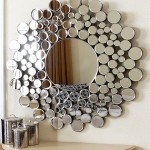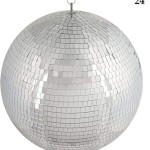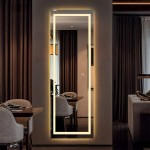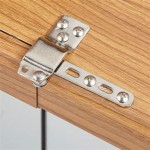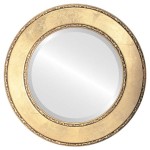Do Convex Mirrors Produce Virtual Images?
Convex mirrors, also known as diverging mirrors, are spherical mirrors with their reflecting surfaces curved outwards. They are commonly used in applications like rearview mirrors in vehicles, security mirrors in stores, and wide-angle lenses in cameras due to their unique ability to produce a virtual image. This article explores the characteristics of convex mirrors, focusing on their image formation and why they always produce virtual images.
Understanding Image Formation
Image formation in mirrors is governed by the laws of reflection. When a light ray strikes a mirror, it bounces back at an angle equal to the angle of incidence, following the principle of reflection. The way these reflected rays intersect determines the type and location of the image formed. In convex mirrors, the reflected rays diverge after striking the mirror's surface, resulting in the formation of virtual images.
Virtual Images in Convex Mirrors
A virtual image is an image that appears to be behind the mirror, but the light rays do not actually converge at that point. Instead, they appear to diverge from a point behind the mirror's surface. This creates the illusion of an image located behind the mirror, but the image cannot be projected onto a screen. Here's why convex mirrors always create virtual images:
1.
Diverging Light Rays:
Light rays striking a convex mirror diverge after reflection, meaning they spread out. This divergence prevents the reflected rays from converging to form a real image, which is an image formed by converging light rays that can be projected onto a screen.2.
Image Location:
The virtual image formed by a convex mirror is always located behind the mirror's surface, which is the opposite side of the reflecting surface from the object. This location is determined by extending the diverging reflected rays behind the mirror, where they appear to intersect.3.
Image Characteristics:
Virtual images produced by convex mirrors are always upright, reduced in size, and located closer to the mirror than the object. These characteristics are consistent with the diverging nature of light rays in convex mirrors.Applications of Convex Mirrors
The unique properties of virtual images produced by convex mirrors make them suitable for various applications. Their wide field of view, which results from the diverging nature of the reflected rays, allows them to capture a broader area than plane mirrors. This attribute is highly beneficial in applications where a wide view is crucial:
1.
Rearview Mirrors in Vehicles:
Convex mirrors are used in vehicles to provide drivers with a wider view of the road behind them. This allows drivers to see more traffic and potential hazards, making them a safety feature in automobiles.2.
Security Mirrors in Stores:
Convex mirrors are often installed in stores to provide security personnel with a wider view of the store floor. This helps in monitoring customer activity and preventing theft.3.
Wide-angle Lenses in Cameras:
Convex mirrors are incorporated into wide-angle lenses used in cameras to capture a broader scene than standard lenses. This feature allows photographers to capture more of the surrounding area, making it ideal for landscape and architectural photography.In conclusion, the ability of convex mirrors to produce virtual images is a fundamental characteristic that defines their applications. Their diverging nature, resulting in a virtual image, allows them to offer a wide field of view, making them essential tools in various fields, from security and transportation to photography.
Can A Convex Mirror Produce Real Image

Can A Convex Mirror Produce Real Image When The Object Is Virtual And Vice Versa Concave If Yes How Will It Be Possible Why Quora
Can A Convex Mirror Form Magnified Image Quora
What Does It Mean When A Virtual Image Is Formed Behind Convex Mirror Possible Quora

A Convex Mirror Always Produces An Erect Real Image Of Diminished Sizean Virtual And Enlarged Sizea Size
Can Convex Mirrors Produce Lateral Inversion Quora

05 Convex Mirrors

A Virtual Image Is Formed By Concave Mirror When The Object Placedat Focusbetween Focus And Polebetween Centre Of Curvaturebeyond Curvature

Real Image Wikipedia

Solved Ysis Can A Convex Mirror Produce Real Images If Yes Describe How No Why Not Does Because It Only Produces Virtual For This


